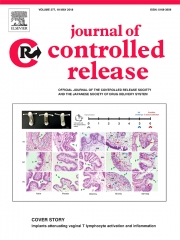Posted on January 10, 2015
Source: Journal of Controlled Release

Effect of surface chemistry on nanoparticle interaction with gastrointestinal mucus and distribution in the gastrointestinal tract following oral and rectal administration in the mouse
Katharina Maisel, Laura Ensign, Mihika Reddy, Richard Cone, Justin Hanes
It is believed that mucoadhesive surface properties on particles delivered to the gastrointestinal (GI) tract improve oral absorption or local targeting of various difficult-to-deliver drug classes. To test the effect of nanoparticle mucoadhesion on distribution of nanoparticles in the GI tract, we orally and rectally administered nano- and microparticles that we confirmed possessed surfaces that were either strongly mucoadhesive or non-mucoadhesive. We found that mucoadhesive particles (MAP) aggregated in mucus in the center of the GI lumen, far away from the absorptive epithelium, both in healthy mice and in a mouse model of ulcerative colitis (UC). In striking contrast, water absorption by the GI tract rapidly and uniformly transported non-mucoadhesive mucus-penetrating particles (MPP) to epithelial surfaces, including reaching the surfaces between villi in the small intestine. When using high gavage fluid volumes or injection into ligated intestinal loops, common methods for assessing oral drug and nanoparticle absorption, we found that both MAP and MPP became well-distributed throughout the intestine, indicating that the barrier properties of GI mucus were compromised. In the mouse colorectum, MPP penetrated into mucus in the deeply in-folded surfaces to evenly coat the entire epithelial surface. Moreover, in a mouse model of UC, MPP were transported preferentially into the disrupted, ulcerated tissue. Our results suggest that delivering drugs in non-mucoadhesive MPP is likely to provide enhanced particle distribution, and thus drug delivery, in the GI tract, including to ulcerated tissues.